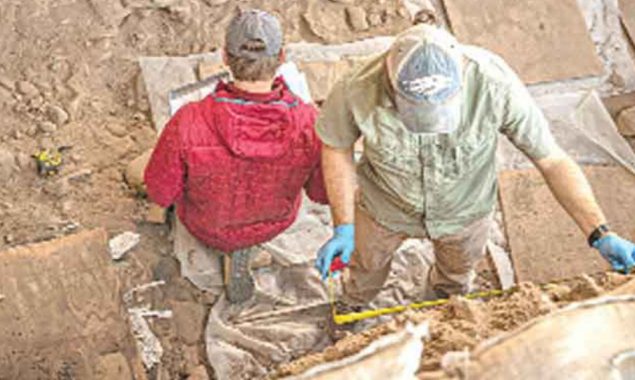Norway introduces stricter entry requirements for Germany & Bulgaria
Stricter Entry Requirements have been introduced by Norway for Germany and Bulgaria while...
Norwegian archaeologists discovered a cluster of longhouses in the southeastern portion of the nation by using ground-penetrating radar, including one of the largest in Scandinavia, in an area that researchers believe was a central place in the late Nordic Iron Age.

Norwegian archaeologists discovered a cluster of longhouses in the southeastern portion of the nation by using ground-penetrating radar, including one of the largest in Scandinavia, in an area that researchers believe was a central place in the late Nordic Iron Age.
The longhouses, which are single-room structures that are long and thin, were discovered in Gjellestad, 86 kilometers (53 miles) southeast of Oslo, where a Viking-era ship was discovered in 2018 close to the Swedish border
Archaeologist Lars Gustavsen at Norwegian Institute for Cultural Heritage Research said in a statement. “We have found several buildings, all typical Iron Age longhouses, and north of the Gjellestad ship. The most striking discovery is a 60-meter (197-foot) long and 15-meter (49-foot) wide longhouse, a size that makes it one of the largest we know of in Scandinavia,”
Gjellestad’s significance at the time was not immediately known. However, the organization, known by its Norwegian name NIKU, stated that it was working to find out.
Archaeologists used the radar technology to cover 40 hectares (approximately 100 acres) south, east, and north of where the Gjellestad ship was discovered this radar system, and archaeological digs are one of the next steps, according to NIKU.
Read more: Norway club launches QR code jersey to defend rights in Qatar
The surveys are the first part of a research project called “Viking Nativity: Gjellestad Across Borders” where archaeologists, historians, and Viking period experts have studied the area’s history during the Nordic Iron Age, which began around 500 B.C. lasted until approximately A.D. 800 when the Viking Age began.
“We do not know how old the houses are or what function they had. Archaeological excavations and dating will help us get an answer to this,” said Sigrid Mannsaaker Gundersen, another archaeologist.
They have also found numerous ploughed-out burial mounds in nearby fields.
“We are not surprised to have found these burial mounds, as we already know there are several others in the surrounding area,” Gustavsen said. “Still, these are important to know about to get a more complete picture of Gjellestad and its surroundings.”
Catch all the Sci-Tech News, Breaking News Event and Latest News Updates on The BOL News
Download The BOL News App to get the Daily News Update & Follow us on Google News.